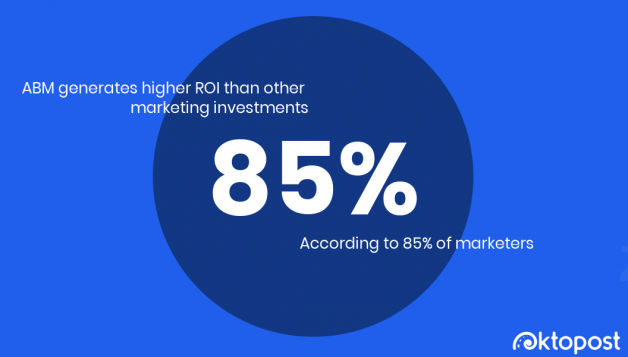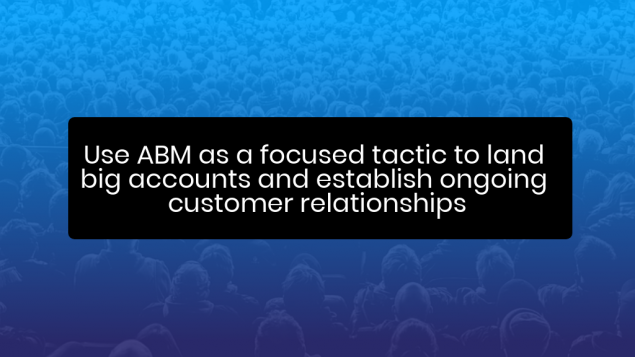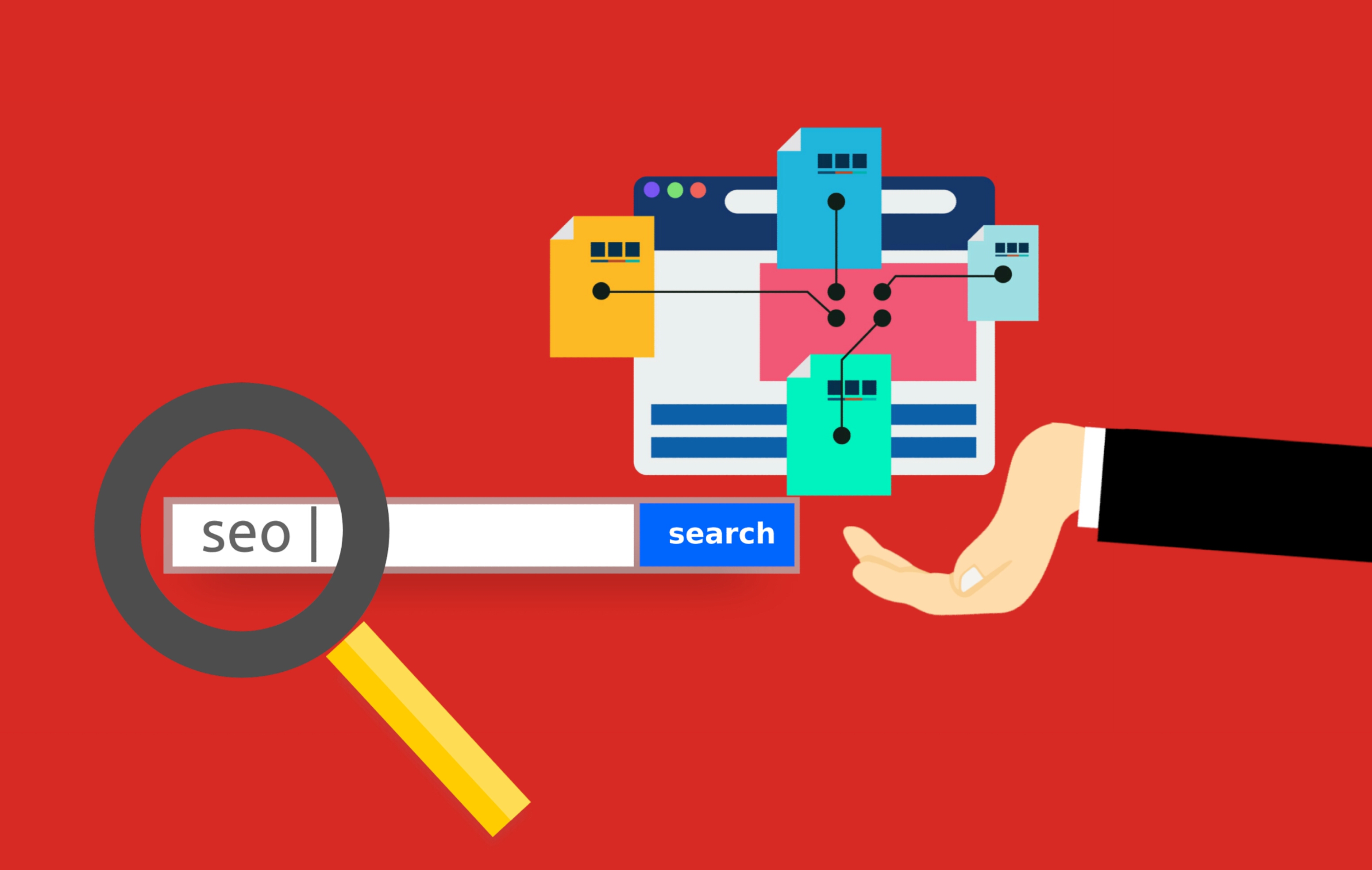The comprehensive account based marketing (ABM) bible

Table of contents
In the beginning, marketing was a simple process. You’d take your salable goods to the market, and anyone who needed them would know they could find you there. Boom, marketing.
Every development in the art of marketing since then has served to further complicate matters.
We don’t mean to imply that’s a bad thing. Marketing has had no choice but to grow and evolve.
Omnichannel digital marketing may be more challenging to effectively use, but with potential customers around the globe, you can’t just meet them at the market anymore.
In an interesting twist, one of the newest, most effective marketing tactics would be quite relatable to the market sellers of old. Back then, it was likely that a merchant would be personally acquainted with most of their potential customers. It wouldn’t be unusual to see them targeting their efforts toward specific individuals.
Today, individual customer-personalized marketing may seem impossible, considering the scale at which businesses operate. However, when you’re talking about long-term, high-value purchases like B2B software, it’s not only possible — it may be the smartest direction to take your marketing efforts. We call this strategy Account-based Marketing (ABM).
What is account-based marketing (ABM)?
ABM is a strategy that treats individual potential customers as an entire “market” in themselves. In ABM, marketing departments create campaigns, content, events, and promotions that target only one specific customer or account.
Does ABM deliver on its promises? When surveyed, marketers–who should know the difference between hype and reality–seem to believe it’s the real deal. ABM generates higher ROI than other marketing investments, according to 85% of marketers. As many as 60% of companies plan on implementing an ABM program within the next year.

Marketers who use ABM also report higher levels of engagement with their target accounts, especially C-suite executives. They also associate ABM with improvements to their customer relationships and overall reputation, increases in sales leads, faster growth, and greater customer retention.
It is harder to quantify, but just as important that ABM tends to lead to stronger alignment between sales and marketing departments. This is a key indicator of growth and profit for B2B companies.
How does ABM work?
In the broad strokes, implementing ABM is really simple. You use your best sales and marketing tactics but focus them on a single customer, tailored to their individual preferences.
Part of the idea behind ABM is that when you’re trying to close a deal with a big customer—which usually means a big organization—you have many stakeholders who need to be addressed. That means that your one potential customer is more like a self-contained market with varied interests, concerns, and priorities.
Instead of treating these types of prospects as one customer out of many, you can get much better results by treating them like one market with many customers. All these “customers” must be acknowledged, communicated with, and satisfied that your product is the right choice.
By considering each customer as a complex system in its own right, you can target your efforts to address each stakeholder’s desires and pain points.
One side benefit of ABM is that it’s easier to track the ROI on your marketing investments. When you can tie the costs of specific marketing activities to a single client (and all their associated revenues), it becomes crystal clear what investments are generating revenue. With ABM, you don’t have to deal with the attribution problems that plague industry-wide marketing campaigns.
Another thing we like about ABM is how it can shorten the sales cycle. When ABM is your focus, your sales team works less on leads that may or may not pan out. Instead, they’re giving important, high-value clients their full-court press.
Recommended for further reading
How ABM unites sales and marketing
Yet another benefit of ABM is its tendency to bring sales and marketing teams together. It’s a cliché that these departments are often in conflict, but like many clichés, it comes from a grain of truth.
Sales need marketing to generate good leads and make deliverable promises; marketing needs sales to embrace and carry out their grand designs. When things don’t work out as intended, there can be finger-pointing and bad feelings all around.
ABM keeps sales and marketing focused on the same goal. When there’s no tension between the lead’s sales wants and the lead’s marketing needs, both teams have a much easier time working collaboratively.
Who shouldn’t be using ABM?
Sometimes, when a new process or technology takes the world by storm, its adherents advise everyone to adopt it as a universally applicable good thing. This is definitely not the case with ABM.
ABM is for enterprise-level accounts.
It doesn’t scale down and out to accommodate marketing done by companies that primarily sell to retail customers or small to medium-size businesses. If that describes your business model, don’t waste your time with ABM. There’s little chance you could deploy it effectively enough to see a positive ROI on the hard work and investment put into it.
Who should be using ABM?
For most organizations, the best served by an ABM strategy is B2B merchants that deal with enterprise-level solutions. If you’re in a business where every client represents a significant portion of your total revenue, you’re who ABM was made for.
One important thing to note: ABM is not intended to replace industry-wide marketing campaigns.
There may be businesses whose products are so individualized that it might make sense to go an ABM-only route. But, for the most part, we’re assuming that ABM should be used as a focused tactic to land big accounts, and establish solid ongoing relationships with them.

If your broadly focused campaigns are bringing in leads and delivering good ROI, let them continue.
5 Tried-by-fire tips for a successful ABM strategy
1. Choose your targets wisely
Define your target audience as accurately as possible, with as much granular detail as possible. A solid ABM strategy will require a lot of resources. You don’t want to exhaust them all on a prospect that isn’t interested, a company that’s too small, or someone who already has a similar solution.
Before launching an ABM campaign, you must conduct research to ensure that your efforts are focused on the right target.
2. Develop relationships
Whether you’re trying to convert online using social media or face-to-face at meetings and conferences, good relationships are the cornerstone of ABM. It’s not about sending more emails or making more phone calls to a specific group. It’s about building an actual, authentic, give-and-take relationship.
That can take time, and there’s no surefire formula for making it happen. When you do it right, however, it will pay the best dividends. Be sophisticated, smart, and systematic. When you can be that “friend in the industry” to current and potential customers, you’re laying solid foundations for an effective ABM strategy.
3. Work the omnichannel
The omnichannel is your best ally. ABM may call on marketers to develop real connections and “be a friend” to your customers. However, that doesn’t mean you’re stuck communicating via late-night chats on a landline.
ABM may be like marketing to a friend, but it’s still marketing. Remember, anything can be part of an omnichannel approach. One of the main challenges of ABM is reaching the decision-makers in the company you’re targeting. Find out how to get to them and go for it. Whether online, offline, at a conference, showing up at their favorite coffee shop, whatever it takes – find a way.
4. Be more local
When people say, “I hate being marketed to,” that usually just means they’ve never been the target of a great marketing push. Want to give your prospective client a marketing experience so good they won’t even care about your ulterior motives? Host a local event they’ll love attending.
Create a meetup, party, or conference in your area. Invite fifty to a hundred people; but really just targeting a few ABM prospects – or even just one. Tailor the content, venue, speakers, even the food to your target; and do everything you can to make sure they’re able to attend.
If you’ve got prospects at your event, it’s the perfect opportunity for your sales team to step in and chat up your captive audience.
5. Partner up
You can take great pride in building something all by yourself, from the ground up, with no help from others. But it doesn’t need to be your marketing channel.
Don’t be afraid to find compatible channel partners through networking, or by just hiring them directly. A lot of the time, it’s easier to piggyback on someone else’s network than to build one yourself, and there’s no shame in that! Any shortcuts that make reaching stakeholders within your customer’s organization easier should be taken early and often.
Conclusion
Choosing an overarching marketing strategy for your business is one of the most important decisions you can make. It’s also a difficult one with few guarantees – especially if you’ve got an innovative product or are trying to break into an established market.
Merchants and entrepreneurs in the new digital economy often work without a road map. Methods that worked in the past just aren’t good enough to meet the challenges of marketing and selling enterprise-level solutions in 2019.
If the big, long-term prospects that could sustain your business keep slipping through your fingers, consider trying account-based marketing—it might be just what you need.



